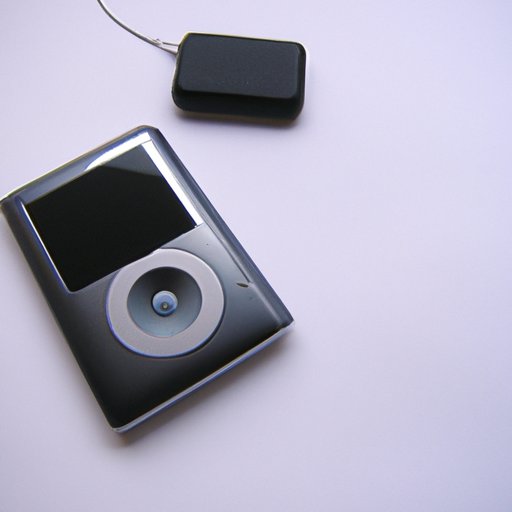Introduction
An MP3 player is a digital audio device that stores and plays music files in the popular MP3 format. MP3 players are small, portable devices that come in a variety of shapes and sizes, and can be used to store and listen to thousands of songs.
The history of the MP3 player dates back to the late 1990s, when the first MP3 players were released. Since then, MP3 players have evolved significantly, offering users improved sound quality, longer battery life, and larger storage capacities.

How to Use an MP3 Player
Using an MP3 player is relatively simple, although the exact process may vary depending on the model and brand of your device. Generally speaking, there are three main steps involved in getting started with an MP3 player: connecting it to your computer, downloading music onto your device, and transferring music from one device to another.
To connect your MP3 player to your computer, you will need a USB cable. Once connected, you can use the included software to download music from the internet or from your own library. This process is usually quite straightforward, and most modern MP3 players are designed to make it as easy as possible.
Once you’ve downloaded the music you want, you can transfer it to other devices such as your smartphone or tablet. To do this, you’ll need to use a compatible app or software, which will allow you to sync the music across multiple devices.
MP3 Player Features: What to Look For When Shopping
When shopping for an MP3 player, there are several key features to consider. These include battery life, storage capacity, sound quality, and compatibility with other devices.
Battery life is an important factor to consider when buying an MP3 player. The longer the battery life, the longer you’ll be able to listen to your music without having to recharge. Most modern MP3 players offer at least 10 hours of battery life, although some models offer up to 20 hours or more.
Storage capacity is also important, as this determines how much music you can store on your device. Most MP3 players offer between 4GB and 64GB of storage space, with the higher-end models offering more.
Sound quality is another important factor to consider. Most modern MP3 players offer good sound quality, but if you’re looking for the best possible sound, you should look for a device with a built-in equalizer. This will allow you to adjust the sound to suit your preferences.
Finally, you should consider the compatibility of your MP3 player with other devices. Many modern MP3 players are compatible with smartphones and tablets, allowing you to easily sync your music across multiple devices.
Pros & Cons of Owning an MP3 Player
Like any purchase, there are both pros and cons to owning an MP3 player. Here are some of the key advantages and disadvantages of owning an MP3 player.
Pros
- Portability. MP3 players are small and lightweight, making them easy to take with you wherever you go.
- Storage. MP3 players typically offer enough storage space to store thousands of songs.
- Durability. MP3 players are generally quite durable and can withstand everyday wear and tear.
- Price. MP3 players are relatively inexpensive compared to other audio devices.
Cons
- Sound Quality. Although modern MP3 players offer good sound quality, they still don’t match the sound quality of high-end audio systems.
- Compatibility. Some MP3 players are not compatible with certain devices, meaning you may not be able to sync your music across multiple devices.
- Battery Life. Although most MP3 players offer decent battery life, it is still not as long as other portable audio devices.

Comparing Different Types of MP3 Players
When shopping for an MP3 player, it’s important to compare different types of players. There are two main types of MP3 players: flash memory based players and hard disk based players.
Flash memory based players are smaller, lighter, and less expensive than hard disk based players. They also offer better battery life, but have limited storage capacity. Hard disk based players, on the other hand, offer larger storage capacities but are heavier and more expensive.
Another factor to consider is budget models vs. high-end models. Budget models offer basic features at a lower price point, while high-end models offer more advanced features and better sound quality. However, these models tend to be more expensive.
Conclusion
In conclusion, MP3 players are small, portable devices that allow you to store and listen to thousands of songs. When shopping for an MP3 player, there are several features to consider, including battery life, storage capacity, sound quality, and compatibility with other devices. Additionally, there are two main types of MP3 players (flash memory based and hard disk based) and budget models vs. high-end models. Ultimately, the right MP3 player for you will depend on your needs and budget.


